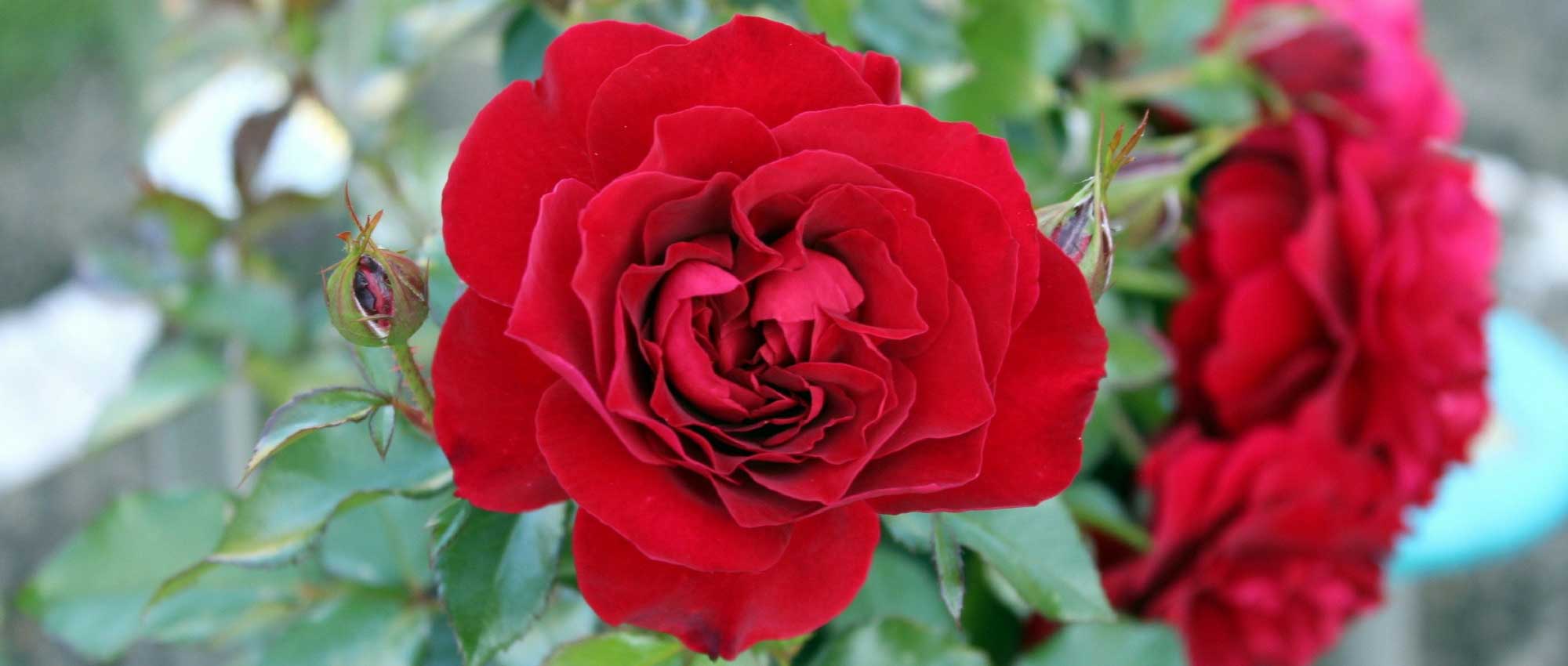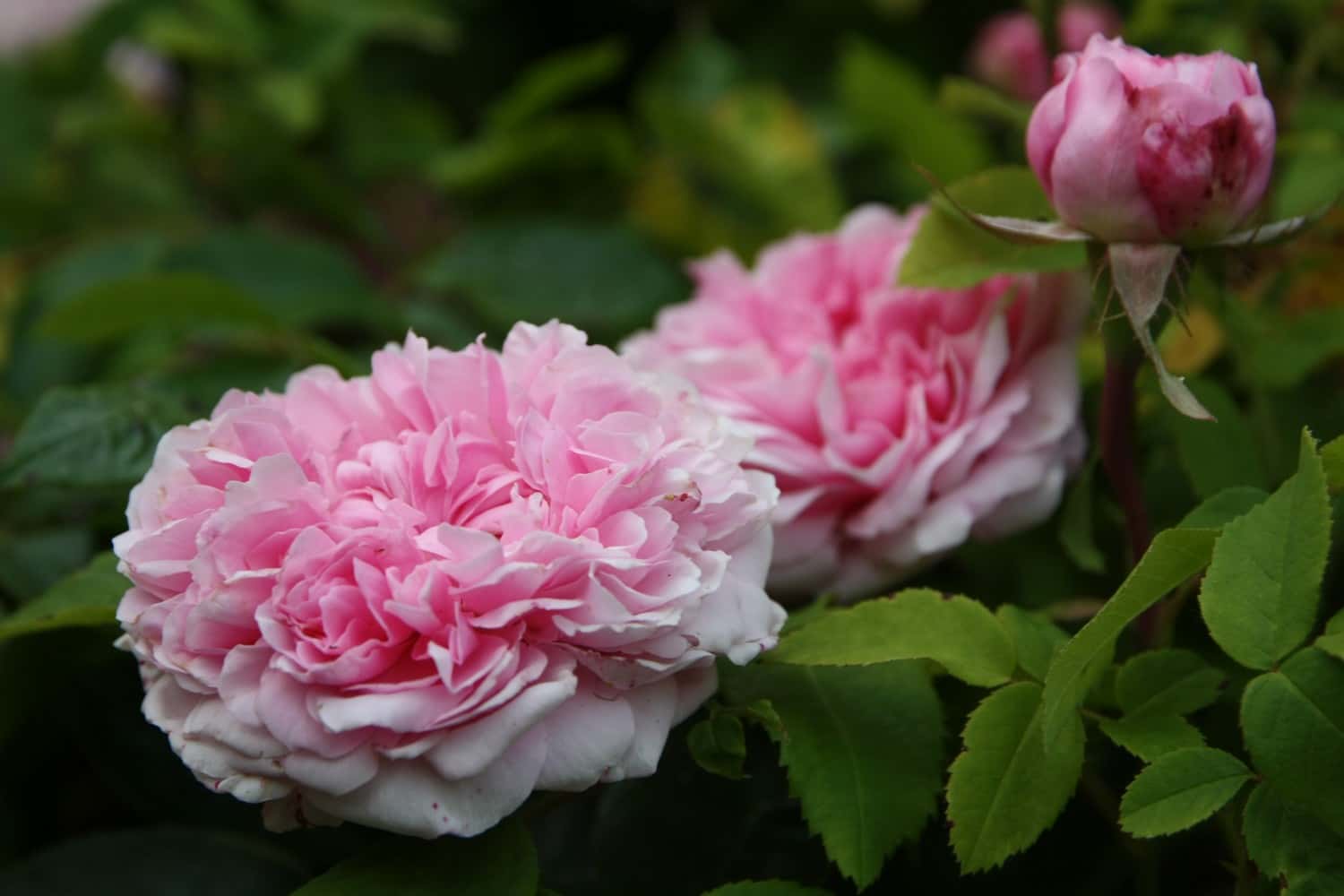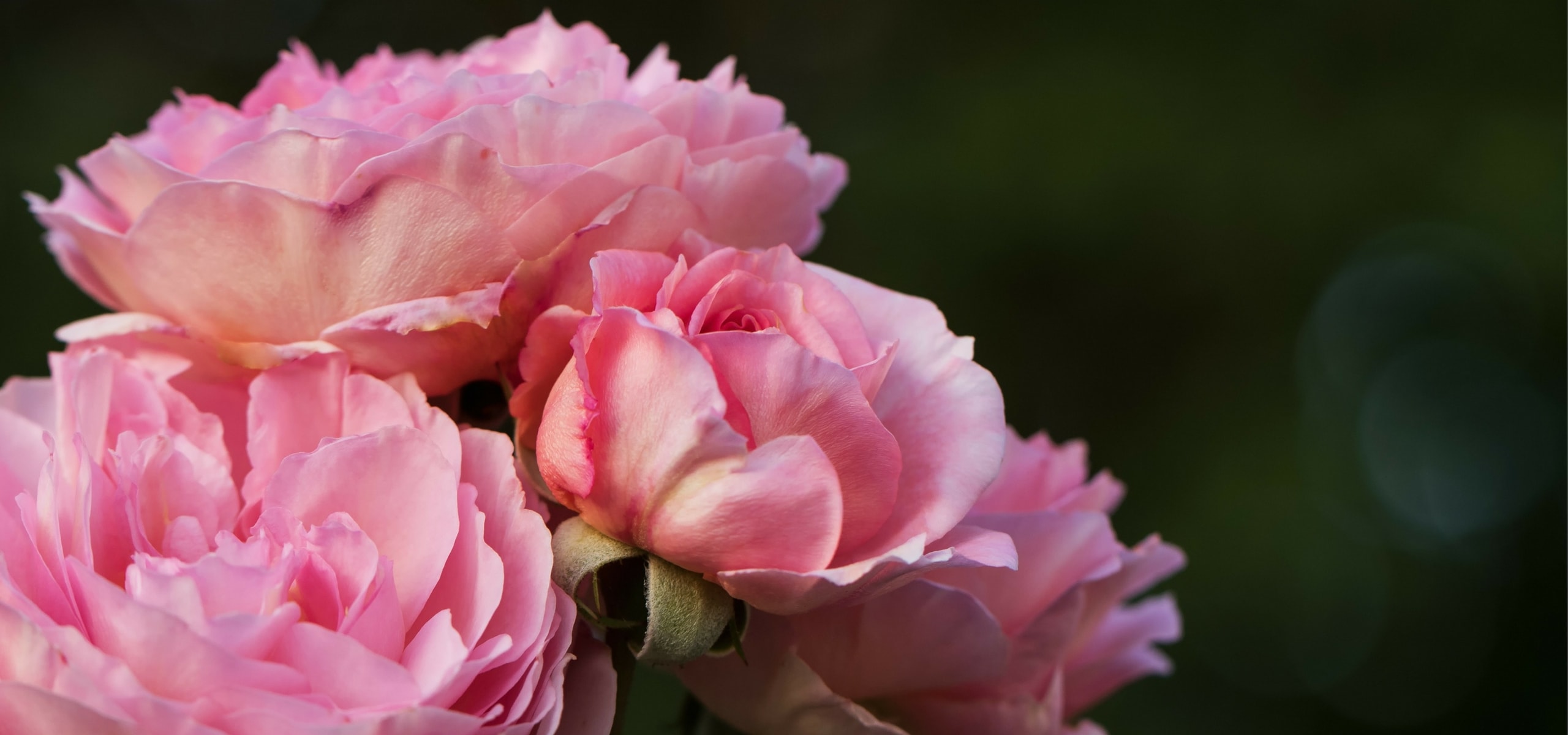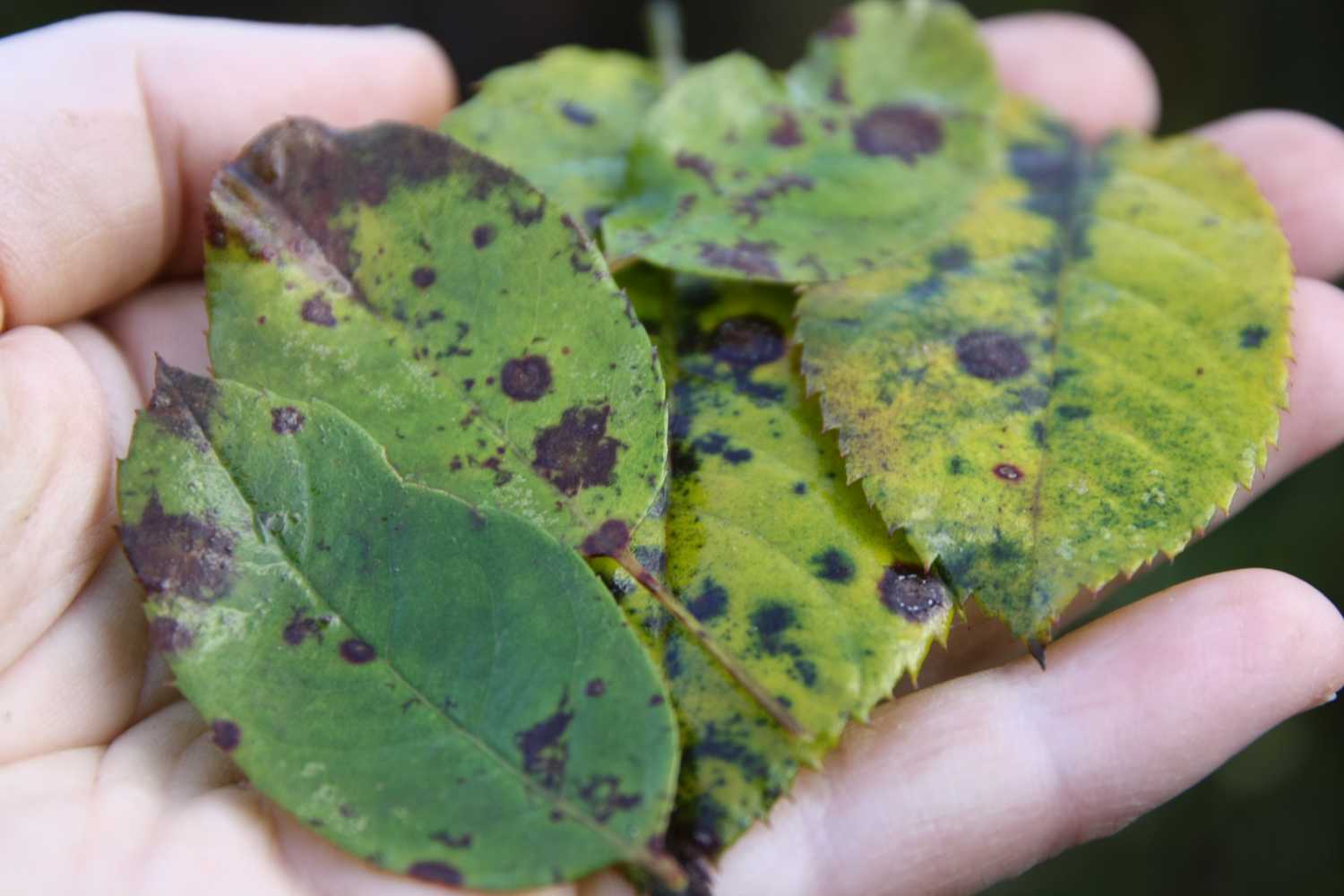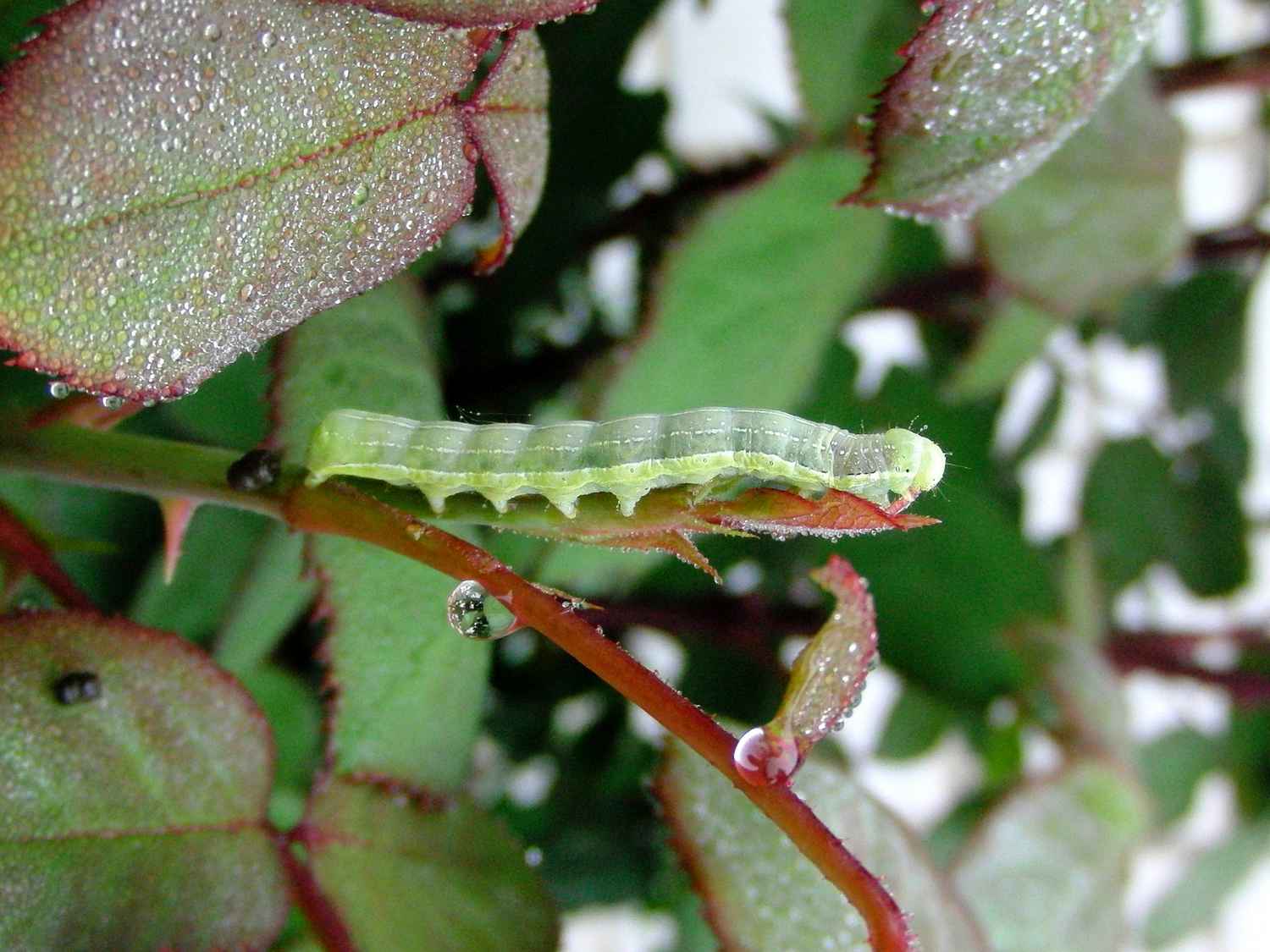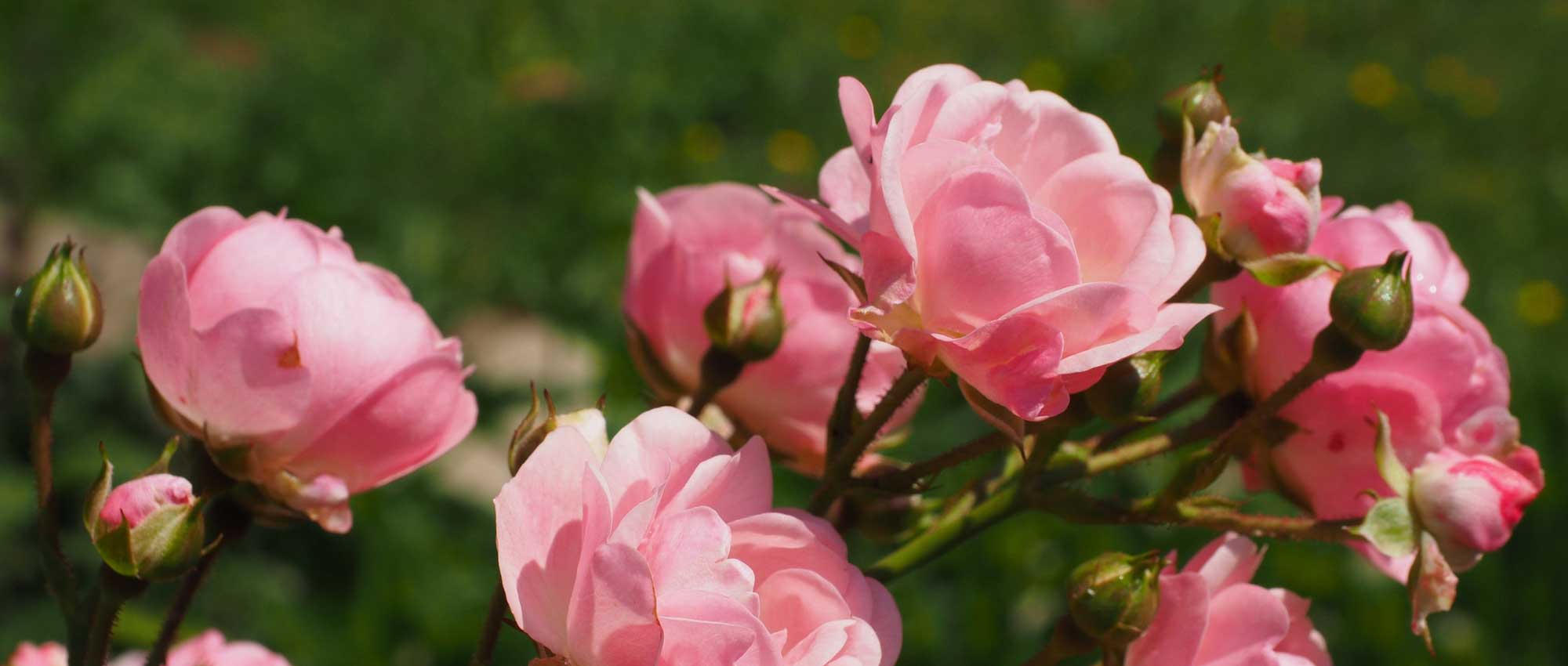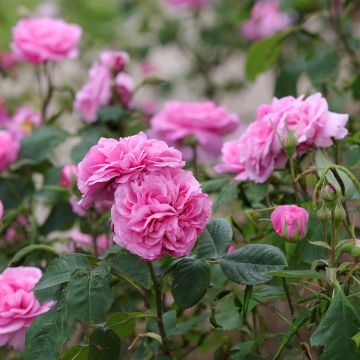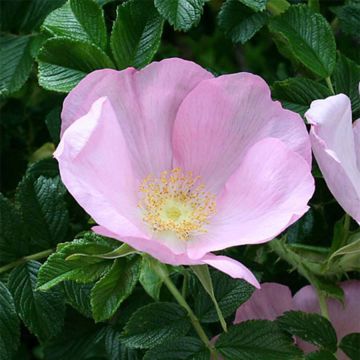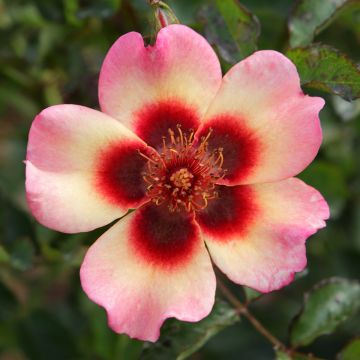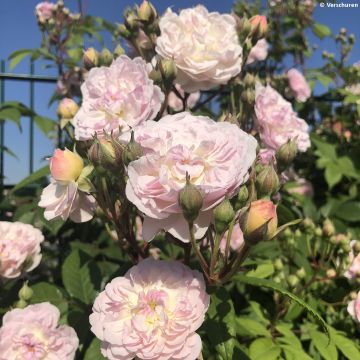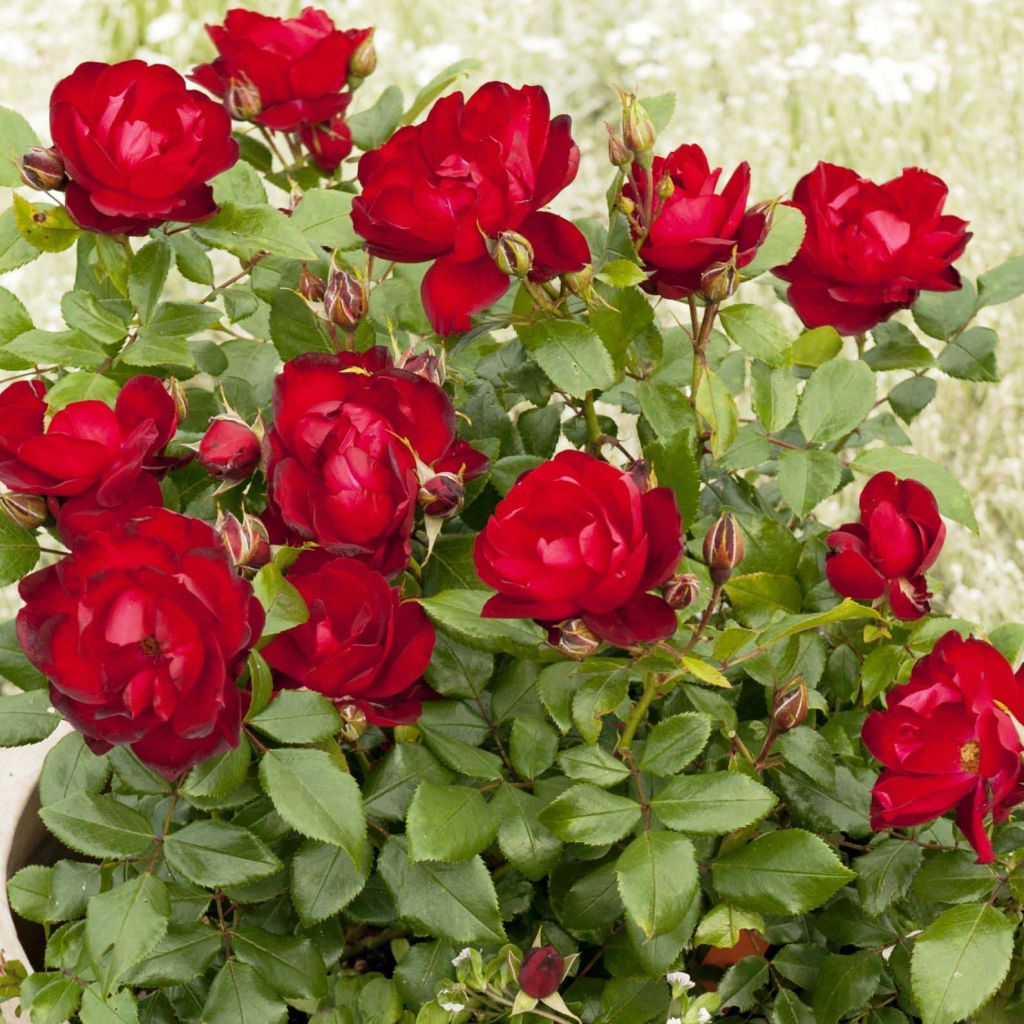

Rosa x floribunda - 'Milano'- Patio Rose
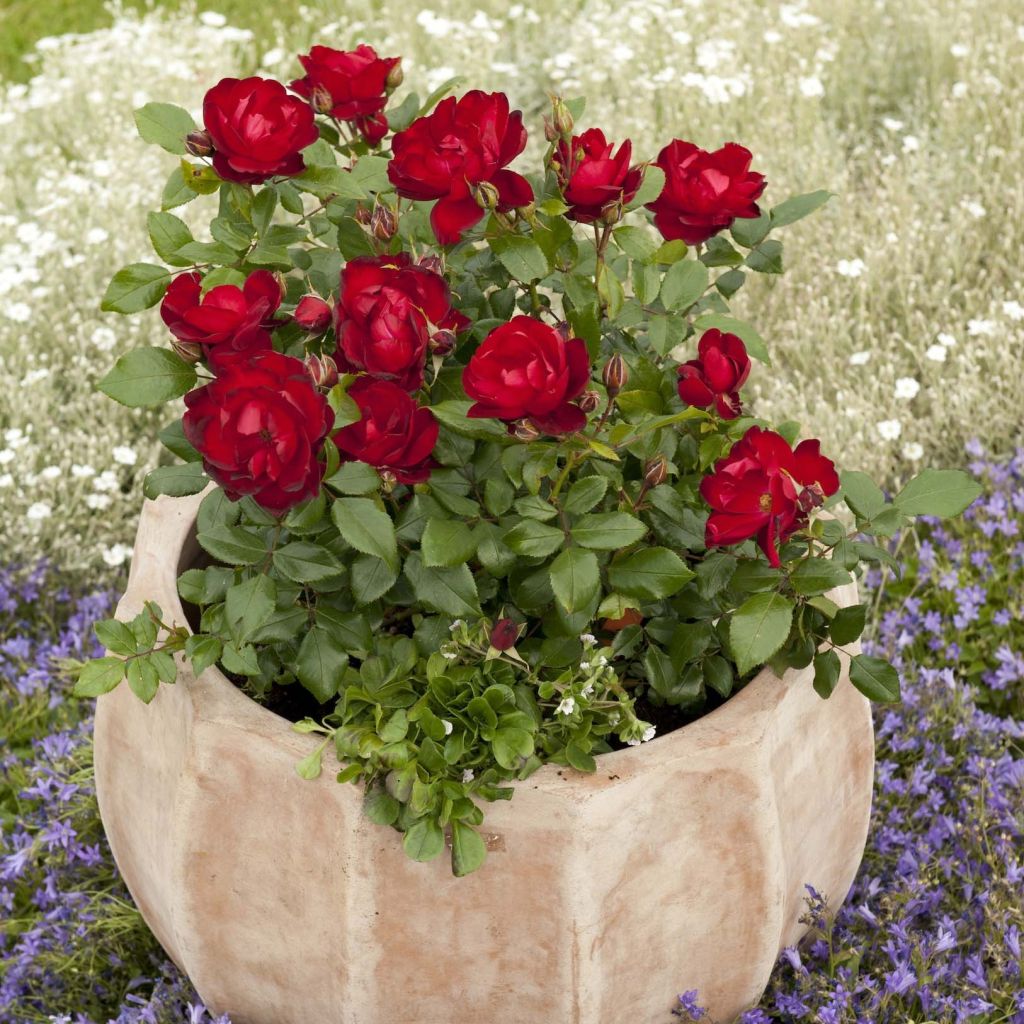

Rosa x floribunda - 'Milano'- Patio Rose
Rosa x floribunda - 'Milano'- Patio Rose
Rosa x floribunda PATIO ROSE® Milano® Korjuwko
Korjuwko
Thanks to the individuals (Hélène for order preparation & quality control, and Hélène from the shipping department), the rose bush I received as a replacement under warranty appears to be healthy. I have planted it near 2 other "Milano" roses and am now waiting for it to take root. Note: I received it with a variety label (essential for identifying the rose bush in all seasons).
Thierry, 10/10/2020
Special offer!
Receive a €20 voucher for any order over €90 (excluding delivery costs, credit notes, and plastic-free options)!
1- Add your favorite plants to your cart.
2- Once you have reached €90, confirm your order (you can even choose the delivery date!).
3- As soon as your order is shipped, you will receive an email containing your voucher code, valid for 3 months (90 days).
Your voucher is unique and can only be used once, for any order with a minimum value of €20, excluding delivery costs.
Can be combined with other current offers, non-divisible and non-refundable.
Home or relay delivery (depending on size and destination)
Schedule delivery date,
and select date in basket
We guarantee the quality of our plants for a full growing cycle, and will replace at our expense any plant that fails to recover under normal climatic and planting conditions.
Description
The Patio Rose 'Milano' is a floriferous, reliable, and disease-resistant rose plant; this variety closely resembles the vibrant 'Lili Marleen', a classic in flower gardens, but with foliage that does not stain. Its semi-double flowers are a scarlet red, grouped in crimson bouquets highlighted by beautiful glossy green leaves. This low but vigorous and well-branched bush provides continuous summer flowering. It is ideal for creating sunny borders and beds, for landscaping small spaces or the patio.
The Milano Rose 'Korjuwko' is a German creation by Kordes, dating back to 2010. It is part of a series of roses, the 'Patio Rose' selected in partnership with 'Globe Planter' for their floribundity and excellent adaptation to pot culture. This variety, belonging to the floribunda rose family, quickly forms a ramified and compact bush with thorny stems, measuring 50cm (20in) in height with a spread of about 40 cm (16in). It is covered with light foliage, initially red and turning dark green, with thick, shiny leaflets toothed at the edges. Its flowering is abundant and continuous from June to October if the soil remains slightly moist in summer. Its wide corollas, measuring 5-6 cm (2in), are semi-double, composed of 25 petals, grouped in clusters of 5 to 7 flowers. The tightly closed buds open into globular flowers, with petals forming shell-shaped bulges that gradually unfold into flatter, well-opened cups, revealing a small yellow heart. The petals are shiny and a beautiful ruby red. Their fragrance is light.
Floribunda roses are perfect for creating beautiful small hedges planted mixed along the terrace or in beds of small shrubs. Pair them with abelias, nandinas, or caryopteris, for example. They are good companions for Phlox paniculata and tall baby's breath. The modest size, generosity, and resistance of 'Milano' make it an exciting variety for all gardens, even small ones, and for growing in large pots. Its uses are varied, according to each gardener's desires: in a rose bed, alongside white varieties (Marie Pavie, Swanny), or purple ones (Blue Boy, Rhapsody in Blue, Roman Waltz), or mixed with easy-to-grow perennials such as perennial geraniums, small-flowered carnations, campanulas, or asters.
Rosa x floribunda - 'Milano'- Patio Rose in pictures
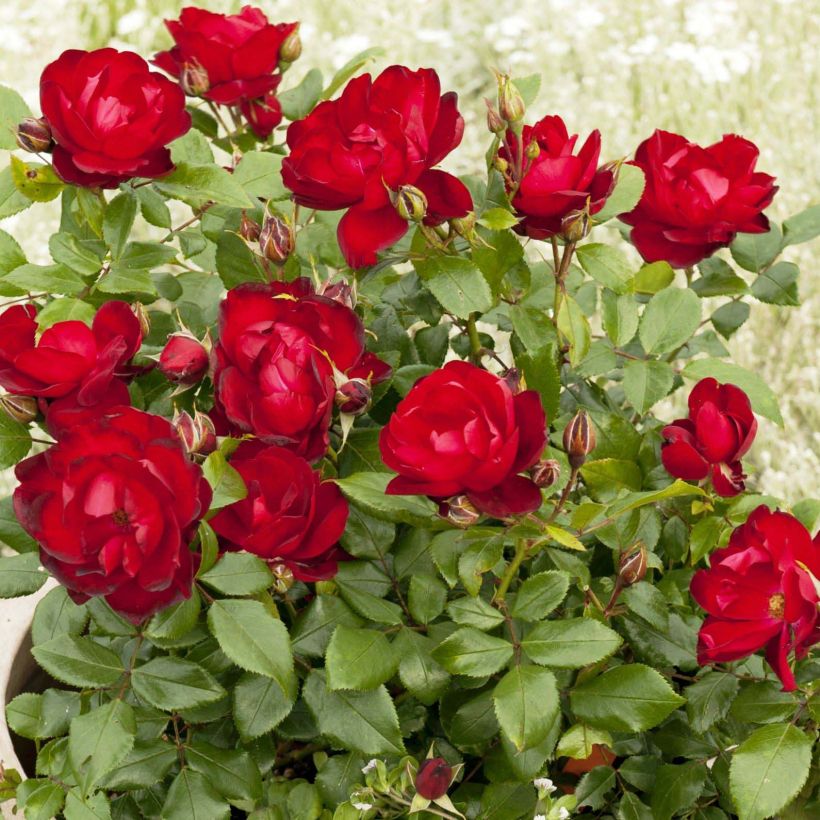



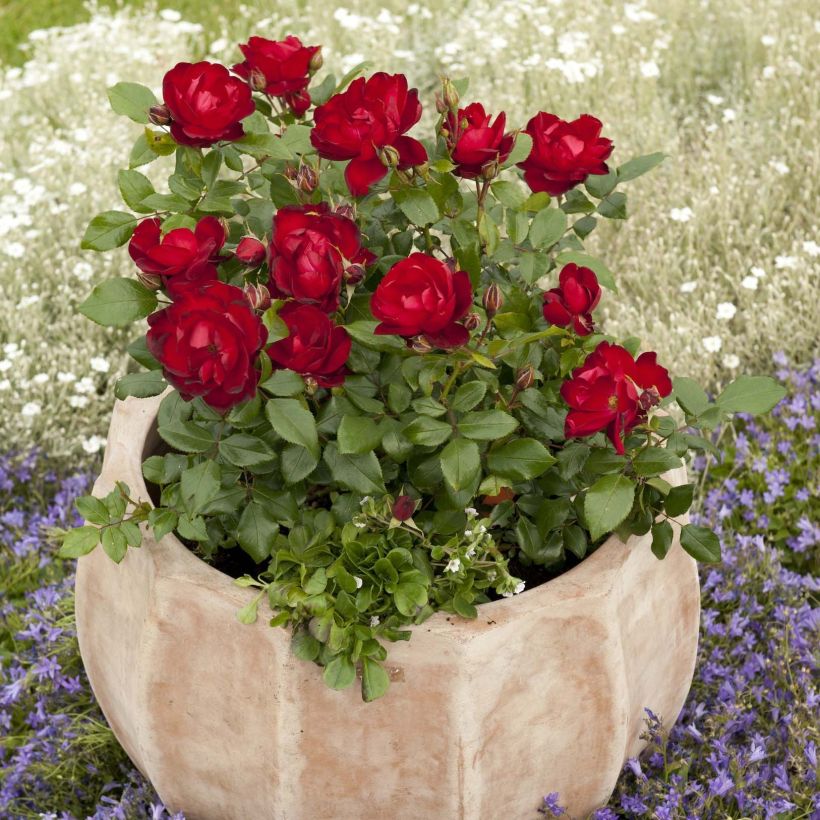

Plant habit
Flowering
Foliage
Botanical data
Rosa
x floribunda
PATIO ROSE® Milano® Korjuwko
Rosaceae
Korjuwko
Cultivar or hybrid
Planting and care
If you want to plant the floribunda rose 'Milano', the best time to do so is between November and March. It is important to choose soil that is well-drained and not too sandy, as roses prefer clayey soil. If your soil is too dry or compact, you can add compost or well-rotted manure to the planting hole. However, you should avoid waterlogged soil during winter.
When choosing a location for your rose plant, make sure it gets plenty of sunlight or partial shade. Roses need a lot of nutrients, so it's a good idea to use a specific fertiliser at the beginning of the vegetation period and regularly throughout the flowering period. Be sure to remove any faded flowers to encourage more blooms.
Floribunda roses are more vigorous and have more flowers than large-flowered rose varieties. To keep your rose bush healthy, it's important to prune the stems by about a quarter of their length at the end of winter. Always prune above an outward-facing bud so that the bush can branch out.
Roses may develop unsightly spots at the end of summer, but this is a natural occurrence and doesn't harm the rose's growth.
Planting period
Intended location
Care
Planting & care advice
-
, onOrder confirmed
Reply from on Promesse de fleurs
Similar products
Haven't found what you were looking for?
Hardiness is the lowest winter temperature a plant can endure without suffering serious damage or even dying. However, hardiness is affected by location (a sheltered area, such as a patio), protection (winter cover) and soil type (hardiness is improved by well-drained soil).

Photo Sharing Terms & Conditions
In order to encourage gardeners to interact and share their experiences, Promesse de fleurs offers various media enabling content to be uploaded onto its Site - in particular via the ‘Photo sharing’ module.
The User agrees to refrain from:
- Posting any content that is illegal, prejudicial, insulting, racist, inciteful to hatred, revisionist, contrary to public decency, that infringes on privacy or on the privacy rights of third parties, in particular the publicity rights of persons and goods, intellectual property rights, or the right to privacy.
- Submitting content on behalf of a third party;
- Impersonate the identity of a third party and/or publish any personal information about a third party;
In general, the User undertakes to refrain from any unethical behaviour.
All Content (in particular text, comments, files, images, photos, videos, creative works, etc.), which may be subject to property or intellectual property rights, image or other private rights, shall remain the property of the User, subject to the limited rights granted by the terms of the licence granted by Promesse de fleurs as stated below. Users are at liberty to publish or not to publish such Content on the Site, notably via the ‘Photo Sharing’ facility, and accept that this Content shall be made public and freely accessible, notably on the Internet.
Users further acknowledge, undertake to have ,and guarantee that they hold all necessary rights and permissions to publish such material on the Site, in particular with regard to the legislation in force pertaining to any privacy, property, intellectual property, image, or contractual rights, or rights of any other nature. By publishing such Content on the Site, Users acknowledge accepting full liability as publishers of the Content within the meaning of the law, and grant Promesse de fleurs, free of charge, an inclusive, worldwide licence for the said Content for the entire duration of its publication, including all reproduction, representation, up/downloading, displaying, performing, transmission, and storage rights.
Users also grant permission for their name to be linked to the Content and accept that this link may not always be made available.
By engaging in posting material, Users consent to their Content becoming automatically accessible on the Internet, in particular on other sites and/or blogs and/or web pages of the Promesse de fleurs site, including in particular social pages and the Promesse de fleurs catalogue.
Users may secure the removal of entrusted content free of charge by issuing a simple request via our contact form.
The flowering period indicated on our website applies to countries and regions located in USDA zone 8 (France, the United Kingdom, Ireland, the Netherlands, etc.)
It will vary according to where you live:
- In zones 9 to 10 (Italy, Spain, Greece, etc.), flowering will occur about 2 to 4 weeks earlier.
- In zones 6 to 7 (Germany, Poland, Slovenia, and lower mountainous regions), flowering will be delayed by 2 to 3 weeks.
- In zone 5 (Central Europe, Scandinavia), blooming will be delayed by 3 to 5 weeks.
In temperate climates, pruning of spring-flowering shrubs (forsythia, spireas, etc.) should be done just after flowering.
Pruning of summer-flowering shrubs (Indian Lilac, Perovskia, etc.) can be done in winter or spring.
In cold regions as well as with frost-sensitive plants, avoid pruning too early when severe frosts may still occur.
The planting period indicated on our website applies to countries and regions located in USDA zone 8 (France, United Kingdom, Ireland, Netherlands).
It will vary according to where you live:
- In Mediterranean zones (Marseille, Madrid, Milan, etc.), autumn and winter are the best planting periods.
- In continental zones (Strasbourg, Munich, Vienna, etc.), delay planting by 2 to 3 weeks in spring and bring it forward by 2 to 4 weeks in autumn.
- In mountainous regions (the Alps, Pyrenees, Carpathians, etc.), it is best to plant in late spring (May-June) or late summer (August-September).
The harvesting period indicated on our website applies to countries and regions in USDA zone 8 (France, England, Ireland, the Netherlands).
In colder areas (Scandinavia, Poland, Austria...) fruit and vegetable harvests are likely to be delayed by 3-4 weeks.
In warmer areas (Italy, Spain, Greece, etc.), harvesting will probably take place earlier, depending on weather conditions.
The sowing periods indicated on our website apply to countries and regions within USDA Zone 8 (France, UK, Ireland, Netherlands).
In colder areas (Scandinavia, Poland, Austria...), delay any outdoor sowing by 3-4 weeks, or sow under glass.
In warmer climes (Italy, Spain, Greece, etc.), bring outdoor sowing forward by a few weeks.






























